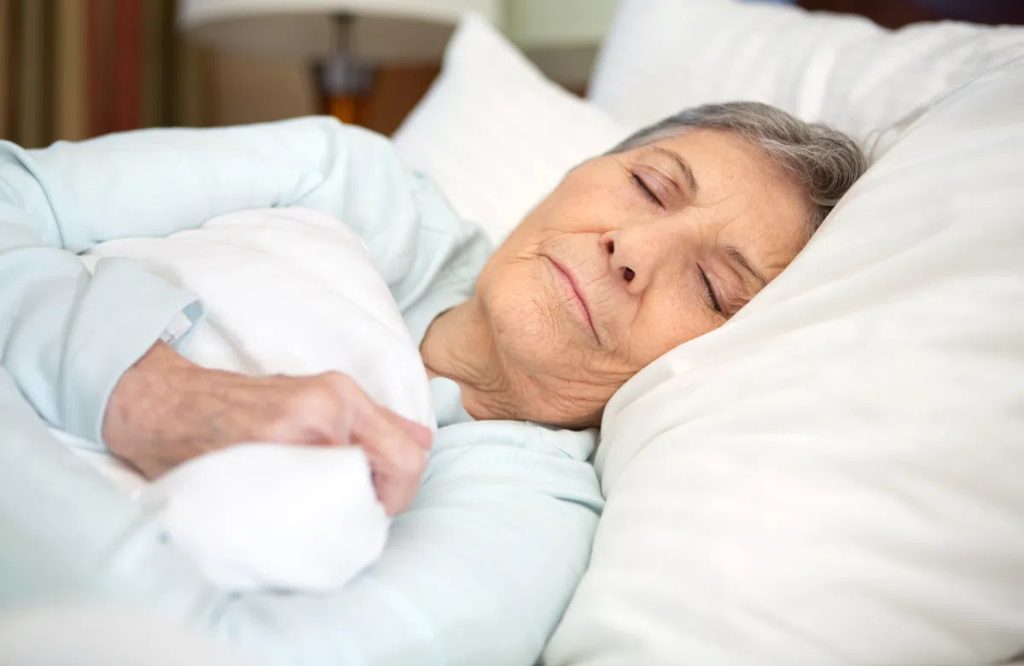Getting a good night’s sleep is essential at any age, but for seniors, it becomes even more important. As we grow older, our bodies go through changes that can make sleep more difficult. Joint pain, back problems, breathing issues, and circulation concerns can all affect the quality of rest. One of the best ways to improve sleep is by choosing the right sleeping position. Finding the right position can help reduce discomfort, improve breathing, and promote better health overall.
Why Sleep Position Matters for Seniors
The way you sleep has a big impact on your body. A good sleeping position can help keep the spine aligned, reduce pressure on joints, and prevent common problems like acid reflux or snoring. On the other hand, the wrong position can lead to pain, stiffness, and restless nights. Since sleep plays a key role in physical and mental well-being, it is important to understand which positions offer the most benefits.
Side Sleeping: A Popular and Comfortable Choice
Sleeping on the side is one of the best positions for seniors. It helps reduce back pain, keeps the spine aligned, and improves circulation. Many people also find this position comfortable, especially if they use a supportive pillow.
Side sleeping is particularly helpful for those who suffer from acid reflux. Lying on the left side can prevent stomach acid from rising into the esophagus, which can help reduce heartburn. It is also a good position for seniors with sleep apnea or snoring issues because it helps keep the airway open, making it easier to breathe during the night.
For added comfort, placing a pillow between the knees can help keep the hips and spine aligned. This reduces pressure on the lower back and joints, making it an excellent option for those with arthritis or hip pain.
Back Sleeping: Best for Spinal Support
Lying on the back is another good sleep position, especially for those with back or neck pain. This position evenly distributes weight across the body, reducing pressure on any one area. It also keeps the spine in a natural position, which can help prevent stiffness and discomfort.
Seniors who suffer from swollen legs or circulation issues may also benefit from sleeping on their back with their legs slightly elevated. This can help reduce swelling and improve blood flow. However, this position is not ideal for everyone. Those who have sleep apnea or snoring problems may find that lying on their back worsens these issues.
To make back sleeping more comfortable, using a supportive pillow under the knees can help relieve lower back pressure. A medium-firm mattress also works best to provide proper spinal support.
Reclined Position: A Good Option for Certain Conditions
Some seniors find it more comfortable to sleep in a slightly reclined position. This is especially helpful for those who suffer from acid reflux, breathing difficulties, or chronic back pain.
Sleeping in a reclined position can help reduce strain on the lower back while also keeping the upper body elevated. Many seniors who have difficulty sleeping flat on a bed choose to use an adjustable bed or a wedge pillow to achieve this position. It can be a good option for those who experience discomfort in traditional sleep positions.
Fetal Position: A Cozy and Supportive Choice
The fetal position, where the body is curled slightly on the side with the knees drawn up, can be comforting for many seniors. This position is especially good for those with arthritis because it reduces pressure on the joints and spine. It can also help improve breathing by keeping the airway open.
However, it is important to avoid curling up too tightly. Keeping the body too curled can lead to stiffness and discomfort, especially in the morning. A soft, supportive pillow can help maintain proper alignment while sleeping in this position.
Stomach Sleeping: A Position to Avoid
While some people are used to sleeping on their stomach, this position is not recommended for seniors. It can cause strain on the neck and spine, leading to pain and discomfort. Additionally, stomach sleeping can put extra pressure on the joints and muscles, making it harder to get restful sleep.
If you are a stomach sleeper and find it difficult to change positions, using a thinner pillow or trying to transition to side sleeping may help make the adjustment easier. Over time, your body may get used to a new position that offers better support and comfort.
Finding the Right Mattress and Pillows for Better Sleep
In addition to choosing the right sleep position, having a good mattress and pillow is essential for a restful night. A mattress that is too soft may not provide enough support, while one that is too firm can cause discomfort. Many seniors find that a medium-firm mattress provides the best balance of comfort and support.
Using the right pillow is also important. A pillow that is too high or too low can cause neck pain and disrupt sleep. Seniors who sleep on their side should use a thicker pillow to keep the head and neck aligned, while back sleepers should opt for a medium-height pillow for proper support. Those who sleep in a reclined position or on their side may also benefit from additional pillows for extra support.
Conclusion
Getting quality sleep is crucial for maintaining health and well-being, and the right sleep position can make a big difference. Side sleeping, back sleeping, and reclining are some of the best options for seniors, helping to relieve pain, improve circulation, and promote overall comfort. While stomach sleeping is not recommended, transitioning to a better position can lead to improved rest and fewer aches and pains.
Along with choosing the right sleep position, investing in a supportive mattress and pillows can help create a comfortable sleep environment. By making small changes, seniors can enjoy better sleep and wake up feeling refreshed and ready for the day ahead.

